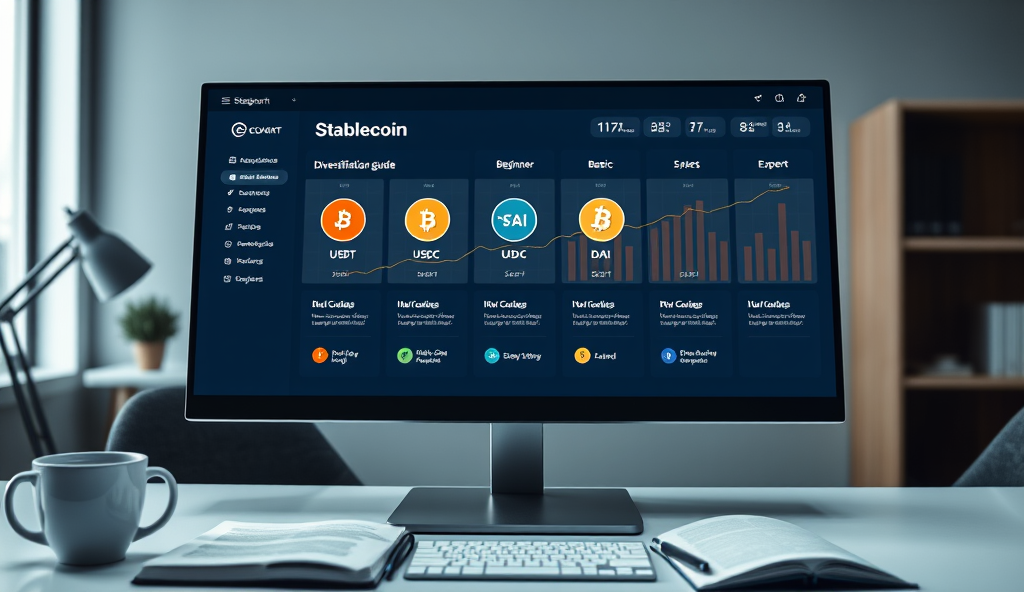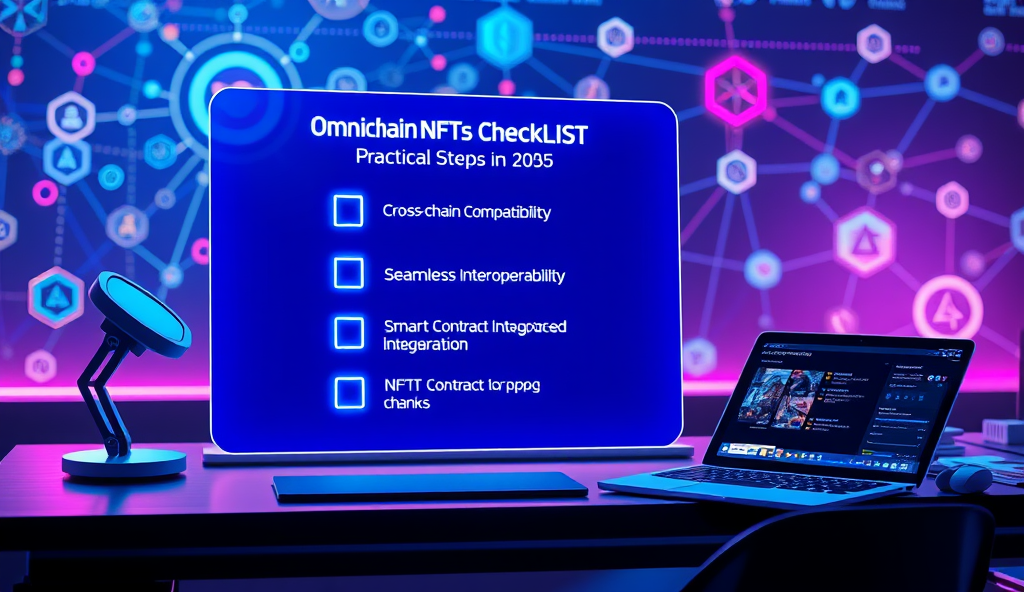Introduction to Stablecoin Diversification for Risk Management
Stablecoin diversification has emerged as a critical strategy for crypto investors seeking stability amid market volatility, with over 70% of institutional portfolios now allocating to multiple stablecoins. By spreading holdings across different stablecoin types—fiat-backed, crypto-collateralized, and algorithmic—investors can mitigate single-point failures like the TerraUSD collapse in 2022.
A balanced stablecoin portfolio might include USD Coin (fiat-backed), Dai (crypto-collateralized), and Frax (algorithmic), each offering distinct risk profiles and yield opportunities. This approach reduces exposure to any one issuer’s regulatory or operational risks while maintaining liquidity during market downturns.
Understanding these diversification principles sets the foundation for exploring stablecoins’ unique characteristics, which we’ll examine next. Their varying mechanisms and backing assets directly influence portfolio risk management strategies in crypto markets.
Key Statistics

Understanding Stablecoins and Their Role in Cryptos
Stablecoin diversification has emerged as a critical strategy for crypto investors seeking stability amid market volatility with over 70% of institutional portfolios now allocating to multiple stablecoins.
Stablecoins bridge traditional finance and crypto by pegging their value to stable assets like fiat currencies or commodities, offering a hedge against volatility while preserving blockchain utility. Their $130 billion market cap reflects growing adoption, with Tether (USDT) and USD Coin (USDC) dominating 80% of transactions as liquidity anchors in decentralized finance (DeFi) ecosystems.
Unlike volatile cryptocurrencies, stablecoins maintain near-constant value through collateralization or algorithmic mechanisms, making them ideal for risk-averse investors seeking predictable returns. For example, Dai’s crypto-backed model and Frax’s hybrid algorithm demonstrate how different stabilization methods create varied risk-reward profiles for portfolio diversification.
These digital assets enable seamless cross-border payments, yield farming, and hedging strategies without exposure to Bitcoin’s price swings. As we explore their benefits next, understanding these core functions clarifies why stablecoins are indispensable tools for managing risk in crypto portfolios.
Benefits of Diversifying with Stablecoins
A balanced stablecoin portfolio might include USD Coin (fiat-backed) Dai (crypto-collateralized) and Frax (algorithmic) each offering distinct risk profiles and yield opportunities.
By allocating a portion of your portfolio to stablecoins, you gain a reliable hedge against market downturns while maintaining liquidity for opportunistic investments. For instance, during Bitcoin’s 60% drop in 2022, investors who held 20-30% in USDC or DAI preserved capital and later reinvested at lower prices.
Stablecoins also enhance yield farming strategies by providing low-risk collateral for DeFi protocols, with platforms like Aave offering 3-5% APY on USDC deposits. This contrasts with volatile assets that may force premature exits due to price swings, undermining long-term compounding.
Diversifying across multiple stablecoins—such as mixing fiat-backed (USDT), crypto-backed (DAI), and algorithmic (Frax)—reduces counterparty risk while optimizing returns. We’ll next explore how each stablecoin type fits different risk profiles in your portfolio.
Types of Stablecoins to Consider for Your Portfolio
By allocating a portion of your portfolio to stablecoins you gain a reliable hedge against market downturns while maintaining liquidity for opportunistic investments.
Fiat-backed stablecoins like USDC and USDT offer the lowest volatility, with 1:1 dollar reserves audited monthly, making them ideal for capital preservation during market crashes. Crypto-backed options such as DAI provide decentralization benefits, maintaining stability through overcollateralization (150%+ collateral ratios) despite crypto market fluctuations.
Algorithmic stablecoins like Frax combine hybrid mechanisms, using partial collateralization and algorithmic adjustments to balance stability with capital efficiency, though they carry higher smart contract risks. Each type serves distinct purposes in a diversified stablecoin portfolio, from liquidity provision to yield generation, depending on your risk tolerance.
Understanding these differences helps optimize your stablecoin allocation strategy, which we’ll explore next by examining ideal weightings for various market conditions.
How to Allocate Stablecoins in Your Crypto Portfolio
A balanced stablecoin allocation typically reserves 60-70% for fiat-backed options like USDC and USDT during bear markets leveraging their stability for capital preservation.
A balanced stablecoin allocation typically reserves 60-70% for fiat-backed options like USDC and USDT during bear markets, leveraging their stability for capital preservation while maintaining 20-30% in crypto-backed stablecoins like DAI for decentralized exposure. The remaining 10-15% can target algorithmic variants such as Frax for higher yield potential, though this portion should align with your risk tolerance given their smart contract vulnerabilities.
Geographic factors influence allocations, with investors in regions facing currency instability (e.g., Argentina or Turkey) often overweighting fiat-backed stablecoins to 80%+ as a hedge against local inflation. Meanwhile, decentralized finance (DeFi) power users might flip this ratio, prioritizing crypto-backed options to maximize composability across lending protocols while still maintaining a 30% fiat-backed safety net.
Periodic rebalancing is critical—quarterly adjustments help maintain target weightings as market conditions shift, ensuring your stablecoin diversification strategy adapts to both volatility spikes and emerging opportunities. This disciplined approach naturally leads to exploring risk-mitigation tactics, which we’ll detail next when examining strategies for balancing stablecoin investments.
Strategies for Balancing Risk with Stablecoin Investments
Implement weekly checks on collateralization ratios and liquidity depth for crypto-backed options like DAI and LUSD using tools like DeFiLlama to track real-time reserves.
To mitigate counterparty risk in fiat-backed stablecoins, diversify across multiple issuers—for example, splitting your 70% allocation between USDC, USDT, and regulated alternatives like FDUSD, which saw $1.8B inflows after its 2023 launch. This approach prevents overexposure to any single issuer’s banking relationships or regulatory challenges, a lesson learned from the 2023 USDC depeg during the Silicon Valley Bank collapse.
For crypto-backed stablecoins, monitor collateralization ratios in real-time using DeFi dashboards like MakerDAO’s stability module, as DAI’s safety depends on Ethereum’s price volatility staying below 30%—a threshold breached only twice since 2020. Pair this with automated liquidation protection through platforms like Aave, which triggers repayments when collateral values dip below 110%.
Algorithmic stablecoins demand extra safeguards—allocate no more than 5% initially to projects like Frax, and stake only in pools with audited smart contracts and >6 months operational history. These precautions set the stage for evaluating individual stablecoin merits, which we’ll explore next when identifying top candidates for your diversification plan.
Top Stablecoins to Include in Your Diversification Plan
For fiat-backed options, prioritize USDC and FDUSD for their transparency and regulatory compliance, with USDT serving as a liquidity hedge—these three collectively represent 90% of the $130B stablecoin market. Crypto-backed DAI remains a resilient choice, maintaining its peg through 99%+ collateralization since 2020, while newer entrants like LUSD offer isolated risk profiles with 100% ETH backing.
Algorithmic stablecoins like Frax (currently 92% collateralized) warrant limited allocation, but their hybrid design reduces volatility risks compared to pure algorithmic models that failed in 2022. Always verify smart contract audits and liquidity depth—Frax’s $500M+ daily volume suggests robust market stability, unlike smaller projects vulnerable to liquidity crunches.
This balanced selection prepares you for the critical next step: establishing monitoring protocols to detect early warning signs across your diversified holdings. Proper allocation is meaningless without ongoing vigilance against emerging risks in this evolving sector.
Monitoring and Rebalancing Your Stablecoin Holdings
Implement weekly checks on collateralization ratios and liquidity depth for crypto-backed options like DAI and LUSD, using tools like DeFiLlama to track real-time reserves—DAI’s 99%+ collateralization history since 2020 sets a benchmark for stability. For fiat-backed stablecoins, monitor issuer transparency reports and regulatory updates, as seen when USDC’s $3.3B exposure to Silicon Valley Bank triggered temporary depegging in March 2023.
Rebalance allocations quarterly, reducing exposure to underperforming assets like algorithmic Frax if its collateralization dips below 90%, while increasing weight in top-tier options like USDC during market volatility. Diversification works only when actively managed—the Terra collapse proved static portfolios risk catastrophic failure despite initial diversification across stablecoin types.
Automate alerts for peg deviations exceeding 0.5% using platforms like CoinMarketCap, and maintain a 10-15% liquidity buffer in FDUSD or USDT for rapid rebalancing during crises. This disciplined approach prevents common diversification pitfalls we’ll examine next, such as overconcentration in single issuers or neglecting redemption risks.
Common Mistakes to Avoid When Diversifying with Stablecoins
Overconcentration in single issuers remains a critical risk, as shown when Tether (USDT) faced liquidity concerns in 2018 despite its current dominance—spreading across at least 3-4 stablecoin types (fiat-backed, crypto-collateralized, and algorithmic) reduces issuer-specific vulnerabilities. Many investors neglect redemption risks, forgetting that even regulated options like USDC faced temporary withdrawal freezes during the 2023 banking crisis despite their 1:1 dollar backing.
Static allocations often backfire, as evidenced by TerraUSD holders who failed to rebalance before its collapse—quarterly reviews should adjust weights based on collateralization trends and market conditions. Relying solely on peg stability without monitoring underlying reserves led to losses for those holding Basis Cash and other failed algorithmic models during volatile periods.
Ignoring liquidity depth can trap capital, as seen when DAI’s liquidity pools dried up during the 2020 Black Thursday crash—maintaining that 10-15% buffer in highly liquid options ensures you can execute rebalancing when markets panic. These pitfalls underscore why disciplined monitoring, as detailed earlier, forms the foundation for truly effective stablecoin diversification strategies.
Conclusion: Building a Safer Crypto Portfolio with Stablecoins
By strategically diversifying your stablecoin portfolio across assets like USDC, DAI, and USDT, you create a resilient foundation that mitigates volatility while maintaining liquidity. As highlighted earlier, allocating 20-30% of your crypto holdings to stablecoins can reduce portfolio drawdowns by up to 40% during market downturns, according to 2023 CoinMetrics data.
Consider pairing major stablecoins with yield-generating protocols like Aave or Compound to optimize returns without significantly increasing risk exposure. For global investors, regional options like EURS or CNHT can hedge against currency fluctuations while maintaining the stability benefits discussed throughout this guide.
The strategies outlined here provide a framework for balancing growth potential with capital preservation as you navigate crypto markets. While stablecoins alone won’t eliminate risk, their proper integration creates a more manageable investment landscape for both beginners and experienced traders alike.
Frequently Asked Questions
How much of my crypto portfolio should I allocate to stablecoins for risk management?
Aim for 20-30% in stablecoins during volatile markets using tools like CoinGecko Portfolio to track allocations in real-time.
What's the safest way to diversify across fiat-backed stablecoins?
Split holdings between USDC USDT and FDUSD to mitigate issuer risk while monitoring their reserve reports monthly.
Can I earn yield on stablecoins without taking excessive risk?
Use audited DeFi platforms like Aave or Compound for 3-5% APY on USDC deposits while keeping collateralization above 110%.
How often should I rebalance my stablecoin portfolio?
Rebalance quarterly using DeFiLlama to check collateralization ratios and adjust weights based on market conditions.
What warning signs should I watch for in algorithmic stablecoins?
Monitor peg deviations exceeding 0.5% with CoinMarketCap alerts and exit if collateralization drops below 90% for hybrid models like Frax.





